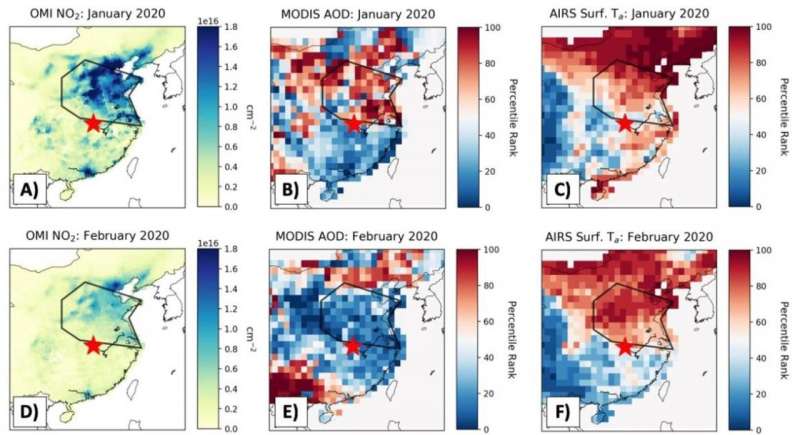How the coronavirus has changed air quality and what it could mean for the weather

The change in air pollution in China from January to February as stay-at-home orders were put into place to stop the spread of the coronavirus has intrigued Louisiana State University meteorologist Paul Miller.
"There have been numerous news articles about the reduction of pollution in China, how clear the water is in Venice and the better air quality in L.A.," said Miller, who is an assistant professor in the LSU Department of Oceanography & Coastal Sciences in the College of the Coast & Environment.
Most of these articles have focused on car exhaust or nitrogen dioxide. However, Miller is interested in the reductions of soot and other particulates that can normally cloud the atmosphere. He has conducted research previously on how particulates in the air effect temperature and rainfall.
He describes it as akin to shining a flashlight through smoke coming from a campfire, which will diffuse the light. Similarly, soot, smog and particulate matter diffuses the sun's rays. Without it, the sun's rays can hit Earth with greater intensity and result in higher temperatures near the surface. This has potential implications on virus transmission as some studies have shown that warmer temperatures can suppress the coronavirus.
"This phenomenon also may have wider implications for the atmosphere," said Miller, who has received a $128,339 "Rapid" grant from the National Science Foundation to investigate this phenomenon.
Using satellite data and a weather model, he will observe how particulate matter in the air correlates with temperature at six-feet above the ground. Miller reports that preliminary results, which he hopes to circulate in an academic journal soon, are promising.
"When you start warming a layer of air, that air becomes less dense and starts to rise. It can create pockets of lower pressure and possibly redistribute clouds and rainfall. Even a minor difference in temperature can have different weather effects and atmospheric dynamics," he said.
For this project, he will focus on East Asia, and China in particular, using satellite and ground data collected in the region and shared through the National Centers for Environmental Information. He plans to contextualize the link between air quality and temperature over the past several years compared to now.
Provided by Louisiana State University





















